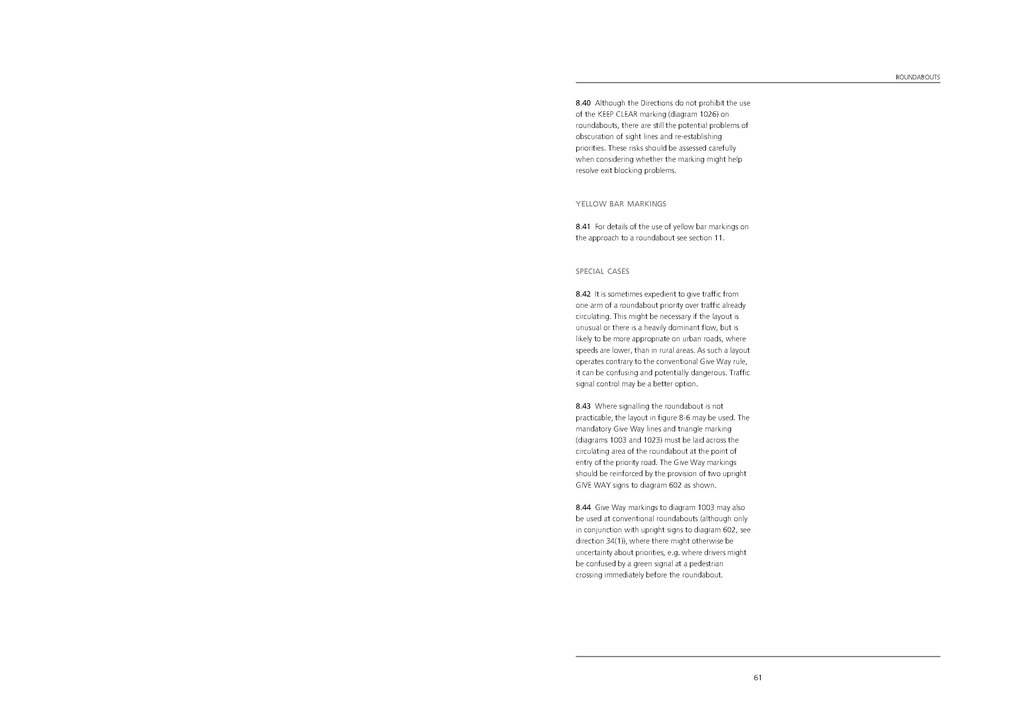8.40 Although the Directions do not prohibit the use of the KEEP CLEAR marking (diagram 1026) on roundabouts, there are still the potential problems of obscuration of sight lines and re-establishing priorities. These risks should be assessed carefully when considering whether the marking might help resolve exit blocking problems.
YELLOW BAR MARKINGS
8.41 For details of the use of yellow bar markings on the approach to a roundabout see section 11.
SPECIAL CASES
8.42 It is sometimes expedient to give traffic from one arm of a roundabout priority over traffic already circulating. This might be necessary if the layout is unusual or there is a heavily dominant flow, but is likely to be more appropriate on urban roads, where speeds are lower, than in rural areas. As such a layout operates contrary to the conventional Give Way rule, it can be confusing and potentially dangerous. Traffic signal control may be a better option.
8.43 Where signalling the roundabout is not practicable, the layout in figure 8-6 may be used. The mandatory Give Way lines and triangle marking (diagrams 1003 and 1023) must be laid across the circulating area of the roundabout at the point of entry of the priority road. The Give Way markings should be reinforced by the provision of two upright GIVE WAY signs to diagram 602 as shown.
8.44 Give Way markings to diagram 1003 may also be used at conventional roundabouts (although only in conjunction with upright signs to diagram 602, see direction 34(1)), where there might otherwise be uncertainty about priorities, e.g. where drivers might be confused by a green signal at a pedestrian crossing immediately before the roundabout.
61
